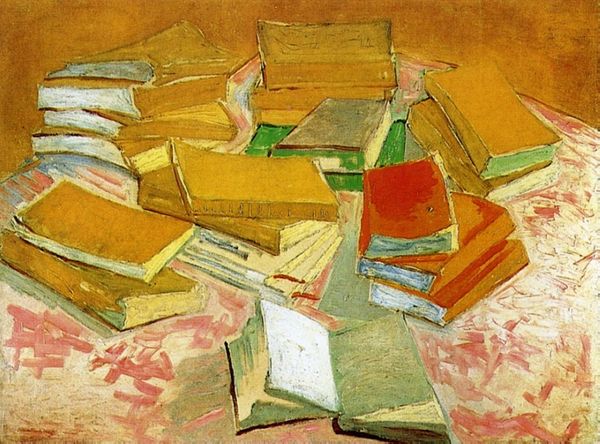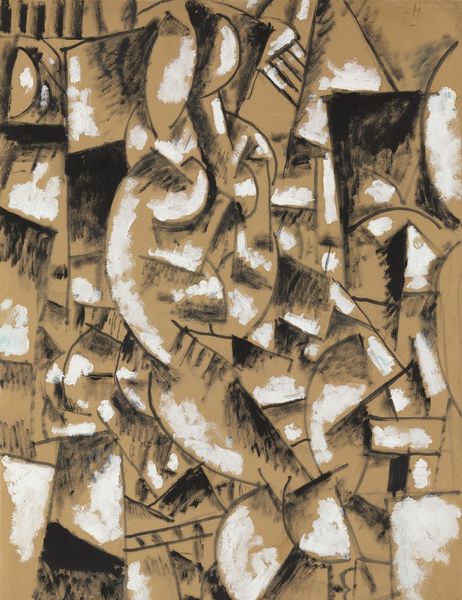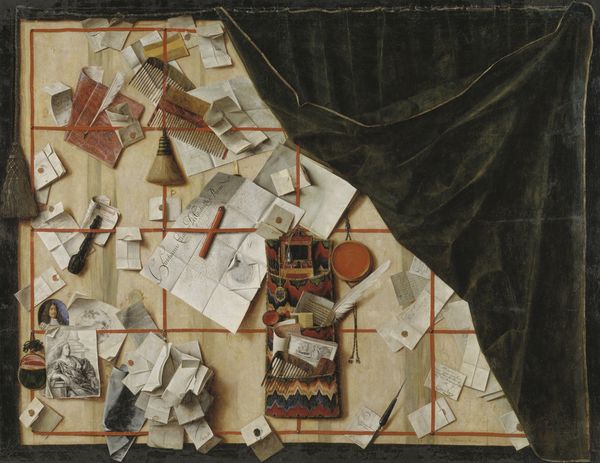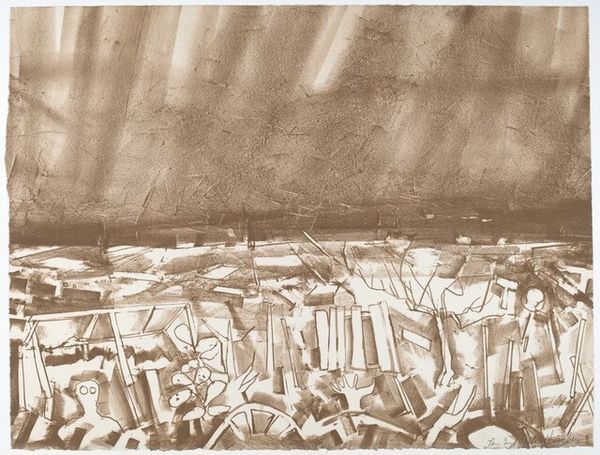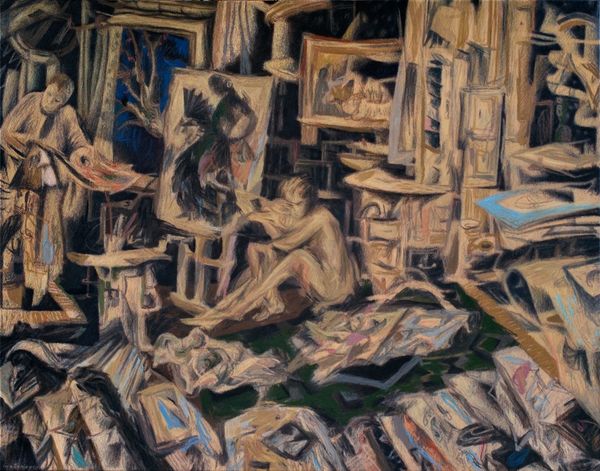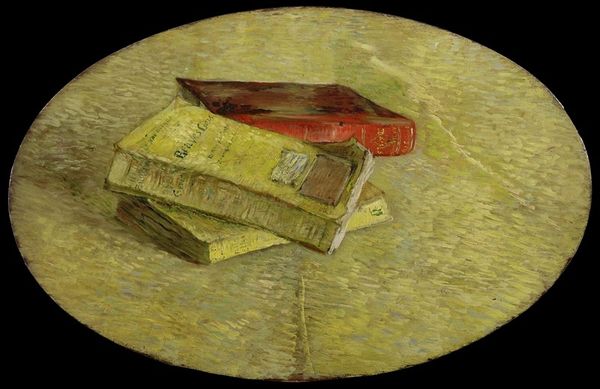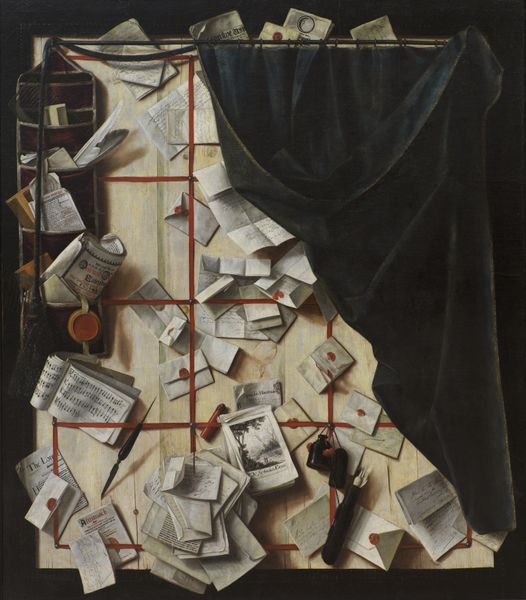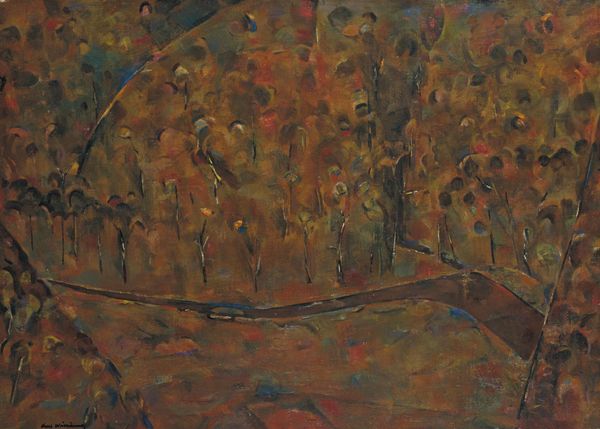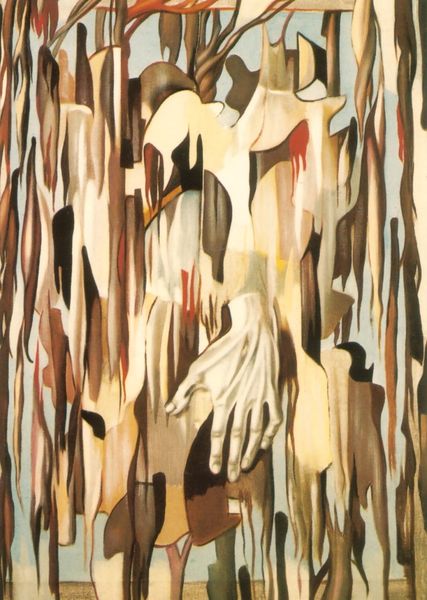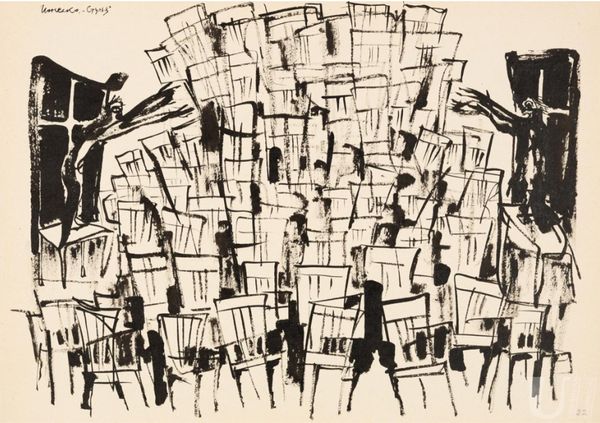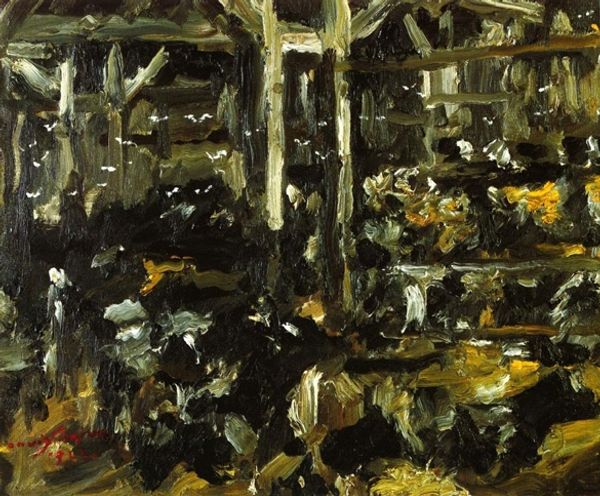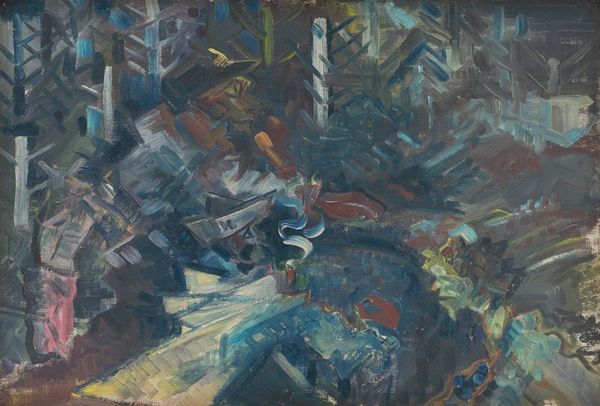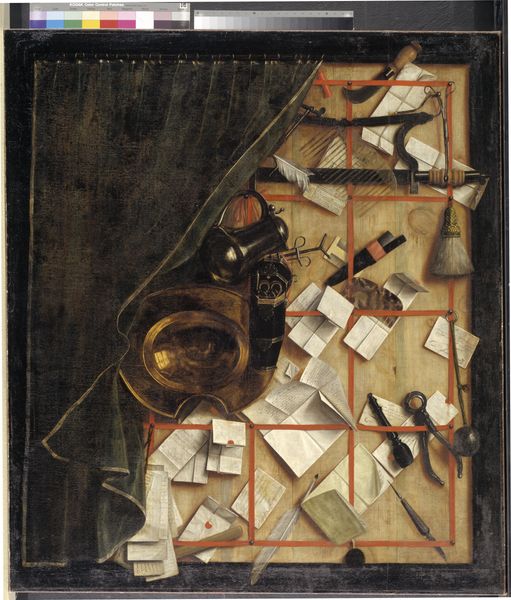
oil-paint
#
portrait
#
oil-paint
#
figuration
#
possibly oil pastel
#
oil painting
#
underpainting
#
history-painting
#
surrealism
Copyright: Modern Artists: Artvee
Curator: This is Salvador Dali’s "Twist dans le studio de Velázquez," an oil painting created in 1962. What strikes you immediately about it? Editor: A tumbling of geometric shapes interspersed with barely-there figures… it feels like the artist has taken the familiar and subjected it to the logic of a dream. Slightly unsettling, even. Curator: Indeed. It’s worth noting how Dali engages with the history of art here. Velázquez, the celebrated Spanish painter, becomes a figure within Dali’s surreal landscape. It becomes a playful dialogue across time. Dali often explored his relationship with art history through his works. Editor: That checkerboard dance has a mesmerizing, almost hypnotic effect, doesn't it? It draws on motifs familiar to both high art and vernacular pattern-making traditions to trigger a sensation of recognition in the subconscious mind, yet they are deliberately skewed from ordinary pattern arrangement to destabilize and puzzle us. And notice how the faces are just barely suggested on each cube - almost cartoon-like. What statement do you think the artist is making? Curator: It speaks, perhaps, to Dali’s view of artistic genius and legacy, setting his mark on artistic heritage through that strange geometry. Consider also how portraiture, historically a marker of status, is subverted, the representation almost dissolving. It hints to ideas surrounding shifting identity during modernization in Francoist Spain. Editor: And observe the background figures, which, despite being modeled to evoke Verlazquez’s style and period, seem like they are watching the cubes move. Curator: It underscores how visual history, when viewed from a unique perspective, transforms the perception of social structures and identities in those painted representations. Editor: This feels like a powerful act of creative re-imagining, a dialogue between the artist and those from past. What an absorbing deconstruction. Curator: Precisely. By situating a contemporary vision within the realm of artistic history, the painting questions established concepts of art and identity. It speaks of a shifting artistic terrain, and societal turbulence through dream-like symbols.
Comments
No comments
Be the first to comment and join the conversation on the ultimate creative platform.
